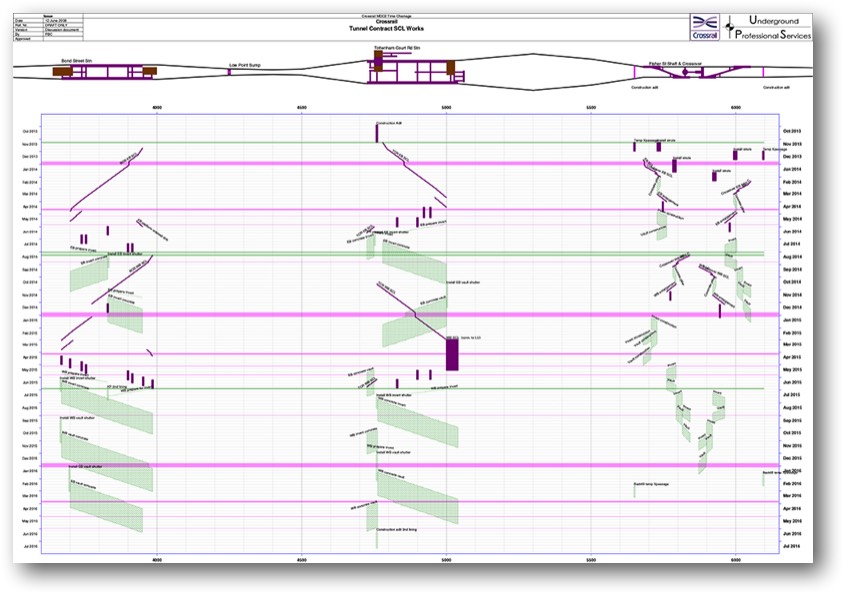
Example time chainage chart
Principles of Time Chainage
The time chainage chart (also known as Time Distance or Time Location) is an extension of the Bar Chart (Gantt Chart) known to all planners and project managers.
A bar chart uses the horizontal axis to represent time, so it displays each activity as a simple bar showing the start and end date. Nothing about an activity’s location or progress rate is shown by the bar. Any potential conflicts are not easily identified in this kind of chart.
Providing more information about each task, the time chainage chart uses the vertical axis as well as the horizontal one. This allows location and progress rate information to be introduced. The usual format for time chainage charts uses the x axis for location (or chainage) and the y axis for time. So for a linear type task, a diagonal line will be produced indicating not only start and end date, but also start and end location (chainage) and the slope of the line will indicate progress rate.
So when would you use a time chainage chart? Basically, any activity that is of a linear or repetitive nature would lend itself to the time chainage format. Examples of appropriate activities include:
- Roads
- Railways
- Pipelines
- Tunnels
- Transmission lines
- Bridges
More and more clients and contractors see the benefits of time chainage charts, both at tender stage and during construction. However there are not many software options available, some very expensive others with very limited functionality. Some of them are only charting tools and have no real planning capabilities. Most have limited progress tracking features that do not make good use of the format.
Step in TimeChainage, this application has been designed to have the following qualities and features:
- be easy to use - with an intuitive workflow, TimeChainage enables schedules to be produced very quickly
- do what you need it to do - a planning tool developed by a Planner. It was also one of the first commercial applications of its type and has been further developed for over 15 years
- be a stand alone planning tool - it can be used in place of or to compliment a standard gantt chart
- be flexible - schedules can be developed and changed to suit project needs and there is a great variety of display options for the chart
- allow comprehensive progress tracking - TimeChainage has a unique method of dealing with actual progress allowing daily production to be input. Full as-built history is maintained
- produce clear and good looking presentations - includes a comprehensive set of formatting options
- provide value for money - should more than pay for itself the first time you use it
